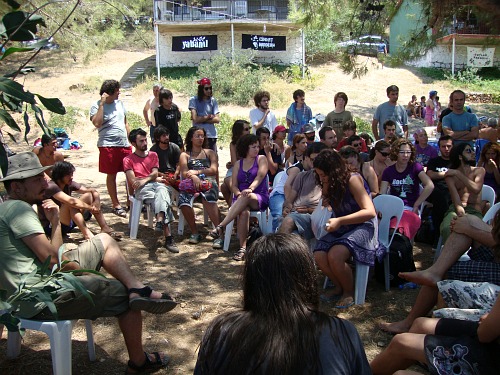“Wind Turbine Syndrome” book translated into Turkish
Nov 8, 2010
We are pleased to announce that an abridged edition of Nina Pierpont’s “Wind Turbine Syndrome” has been translated into French, German, Italian, Polish, Japanese and, now, Turkish. In all cases, it was done by qualified native-speaking volunteers in each of these countries. Our thanks to each of them! The translations are powerful testimony to the global outrage over the reckless siting of industrial wind turbines.
Frankly, a Turkish translation was not one we expected. Yet it turns out that turbines are a highly contentious issue in Turkey. The following was supplied by Serhat Elfun Demirkol, the Turkish translator of Pierpont’s book.
As of May 2010, the capacity of wind power projects in operation in Turkey is 1029.85 MW (631 turbines in 33 wind farms, 22 of them were constructed between 2008 and May 2010). The capacity of projects under construction and to be commissioned in 2010 is 492.35 MW (almost 244 turbines in 11 wind farms). The capacity of projects expected to start construction in 2010 is 644.45 MW (17 wind farms). The government plans to enhance the installed capacity of wind power to 20,000 MW by 2023, according to the Electrical Energy Market and the Security of Supply Strategical Document, published in May 2009.
According to the same document, the government plans to use the whole hydropower potential in Turkey. This means almost 2000 hydroelectrical power plants to be built. This also became a great concern in Turkey, both for environmentalists and for local people.
Even when people call and defend wind power as an alternative for hydro projects, the concerns with wind power are becoming perceptible. On June of this year, 1500 local people came together to protest the 875 wind turbines planned to be built in their lands in the Samandağ region of Turkey (Hatay Province). In Karaburun (İzmir Province), wind turbine construction was suspended due to possible interference with military radar systems. And the Turkish Nature Association (Doğa Derneği), which identified the 305 key bio-diversity areas (KBA) in Turkey and published a two-volume book about these areas, is also making a study for updating the threats to these areas. (It is not published yet, but the Nature Association identified the wind turbines as a threat to the Key Bio-Diversity Areas of Turkey.) There are almost 9 KBAs which are threatened by wind farms under operation, and almost 40 KBAs which threatened by wind farms planned for construction.
The following photo is from a demonstration that was held this past July, called “How Alternative Are Alternatives?” I made a presentation about alternative solutions, explaining why they are not alternative to our energy crisis. The person with the hat, at the left side of photo, is me.


